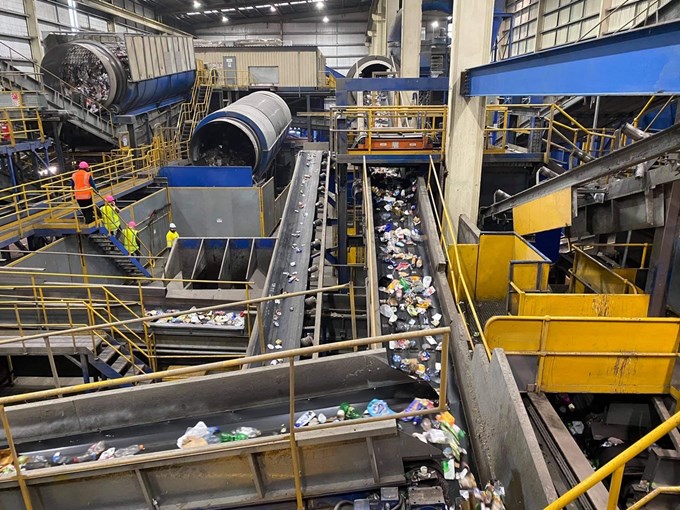Auckland’s recycling stayed on track, despite all the obstacles of 2020. Councillor Richard Hills shares how Auckland maintained positive results for recycling and what is unique compared to other regions.
Size matters: scale of recycling makes a difference
Aucklanders are passionate recyclers, and close to half a million households participate in the fortnightly kerbside collection. Auckland Council collects about 135,000 tonnes of recycling each year (an avg of 90 kg per person). In December alone, Aucklanders generated 12,615 tonnes of recyclables.
The size of Auckland’s recycling operation makes it easier to find markets for recyclables. Automated processes and the scale of our recycling operation makes co-mingled recycling bins possible. Smaller regions need to separate each product at the kerb because mixing them results in high contamination rates.
Recycling infrastructure is key
Many councils are reliant on manual collection and sorting, which were less able to operate during the COVID-19 alert levels. Investments in recycling infrastructure will improve recyclability and ensure more recycling can stay onshore.
The upgrade of Auckland’s plastic sorting technology in December enabled up to 35 per cent of Auckland’s plastics to be recycled here in New Zealand instead of overseas.
New optical sorters allow 99 per cent of the 7700 tonnes of recyclable plastic to be correctly recycled, with more of it staying in New Zealand.
The less than 1 per cent of recycling that’s mixed plastics (3, 4, 6, 7) continue to be sent to landfill until a market opens for them.
Auckland Council is now working on an upgrade for paper and cardboard recycling. Paper products are the largest volume of Auckland’s recycling, at around 40 per cent. Glass is the second most common, making up 39 per cent of the total recycling, and it is recycled in New Zealand.
Keep it consistent
Councils that were unable to collect during COVID or changed the rules for what’s accepted have faced an uphill climb to address spiraling contamination rates. Thankfully, kerbside recycling stayed in place without interruption across Auckland in 2020.
Standardising the recycling rules across the country will make it easier for households to remember what’s recyclable. Auckland accepts items for recycling that smaller councils cannot process.
Standardisation should result in more items being recycled, not fewer.
If we move to the lowest common denominator, then we are not effectively managing our waste footprint.

Contamination costs
When people ‘wishcycle’ products that don’t belong in the recycling bin, it impacts everyone. Auckland’s recycling process is automated, but there are still people on quality control, who spend their day removing nappies, plastic bags and other items that should never have been placed in the recycling bin.
Some of the top offenders are single use coffee cups. Most paper takeaway products are coated in a plastic wax which makes them non-recyclable. Around 12 per cent of what is collected in kerbside bins is contamination: things that are too dirty or are not a recyclable material.
You can search by item to find out how to dispose of something if you’re not sure. Empty and rinse your recyclables to avoid contamination.
Contaminated recycling cost Aucklanders around $400,000 last financial year.
These are the extra costs involved in having to handle, sort, and dispose of materials that households wrongly put in their recycling bin.
Product stewardship is needed
Reducing the amount of single-use packaging will always be more sustainable than relying on recycling to sort out the climate crisis. Auckland Council continues to push manufacturers to consider the lifecycle of the materials they use instead of passing the waste problem onto the consumer.
Manufacturers should switch to plastics 1, 2, and 5 which are more easily recycled in New Zealand and overseas, rather than using other types of plastic. Places that use compostable packaging should ensure the container return scheme for these products is simple, as they may not break down in home compost and are not recyclable.
Recycling is good, but not having the waste to begin with is better.


